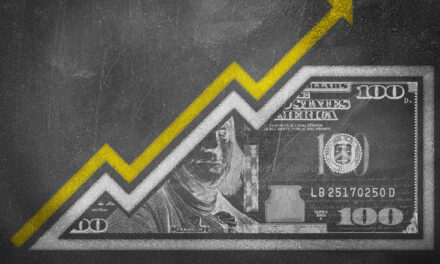The economy appears to be bouncing out of its coronavirus-induced coma, but has government stimulus inflated numbers and created a problematic situation when the money printing stops?
Of course, the stock market is not the economy, and that was exemplified Friday when stocks surged on news that 2.5 million jobs were added in May, but the unemployment rate is still sitting at 13.3% (which the government may still have fudged).
And some more concerning numbers may have been created by massive government stimulus efforts.
While the economy ground to a halt and millions applied for unemployment, personal income actually rose 10.5% in April, according to the latest Bureau of Economic Analysis report. This is a huge spike from 0.2% to 0.6% range seen in December through February.
Personal consumption expenditures (spending) fell by 13.6% in April as many nonessential businesses were forced to shutter while the country tried to curb the spread of COVID-19, per the BEA study:
The $1,662.1 billion decrease in real PCE in April reflected a $758.3 billion decrease in spending for goods and a $943.3 billion decrease in spending for services.
The surging personal income number can be attributed to three coronavirus stimulus bills that included $1,200 direct payments to millions of Americans, and a $600 weekly boost to federal unemployment that has created an environment where people, especially in the service industry, simply don’t want to return to work because the unemployment benefits are more than what they made while working.
Those unemployment benefits are set to end on July 31, and while Congress and the White House have been mulling over another stimulus package, there have been a lot of snags regarding the cost after the government has already spent around $3.3 trillion on its response so far, according to The Wall Street Journal.
The Government Stimulus Conundrum

Banyan Hill’s Ted Bauman
Banyan Hill Publishing economist and economic historian Ted Bauman says another stimulus bill passing is a toss-up “entirely based on politics, not economic or social need.”
“If you’re talking about fiscal stimulus moving through Congress and getting the president’s signature, there’s a perverse dynamic at play,” said Bauman, Editor of The Bauman Letter. “Right now, The White House and Senate Republicans are downplaying stimulus. They’re saying the May jobs report proves there’s no need for further stimulus. But they would say that regardless, because what they really want is to get people back to work and the economy opened up.”
But Bauman warned if, as he predicts, second-quarter GDP numbers and more bad economic data come out in July, “the Republicans might backtrack and try to rush through some stimulus just before the election.”
“At that point, it might be the Democrats who choose to go slow on it,” he added.
And as far as the May jobs report beating projections, Bauman questioned if the economy is really recovering in a Friday tweet.
Is the economy rebounding, or did the payroll protection plan do its job as it was intended? If all those restaurant workers who got their jobs back are going to be serving 50% fewer customers, is that a rebounding economy?
— Ted Bauman (@BaumanDaily) June 5, 2020
“If that happens, some of those people recently rehired are going to go right back out on the street because their employers won’t be able to afford to keep them,” Bauman said. “Combine those people with the reduced level of overall expenditure in the economy. Throw in expired unemployment benefits and no more stimulus, and you’ve got a downward spiral. That’s exactly what happened during the Great Depression, when Roosevelt decided to scale back stimulus in 1936, and the economy went into a huge slide in 1937.”
The coronavirus lockdown created an unprecedented economic environment that isn’t going to just disappear overnight, Bauman warns. And even though May’s unemployment numbers came in better than expected, the number is still 10% higher than it was in January.
“It’s crazy to talk about stimulus on the basis of the May jobs report,” Bauman said. “It’s not a short-term issue. It’s a massive spending shock to the economy, on both the demand and the supply side. Its effects are going to be widespread, long-term and unpredictable.”




